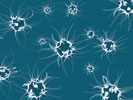

Innovation in the pharmaceutical industries.
The pharmaceutical industry deals with extremely sensitive processes and bio-chemical reactions where the slightest abnormality could lead to entire batch failures that affect yield and eat into profits. Additionally, obtaining samples from the reactors during processes operation poses contamination risks making it difficult to identify clearly the reason for such failures. The efficient use of sensors is therefore vital in this industry.
Innovative methods to get around these roadblocks must therefore be planned and technologies to assist in improving the processes, especially by monitoring parameters such as pH, humidity, and so on, need to be developed. Frost & Sullivan believes that various opportunities exist in both adoption and development of sensor technologies to address these concerns.
Rapid sample analysis
Profiling the contents of raw feed and process parameters as a function of time could provide insights into reaction condition. Instantaneous sample analysis using micro-electro mechanical system (MEMS), or nanotechnology-based chemical sensors with integrated micro-fluidics, would be useful in providing a continuous assessment of chemical reactions.
Smart bioreactors
Miniaturised sensors dispersed within reactors would enable the continuous monitoring of the reaction. There are various challenges to this concept, but with intensive R&D efforts, this is likely to become a reality. This could even take the form of a bioreactor based on advanced organisms that automatically corrects conditions when an anomaly occurs in the process.
Compliance
Compliance with emission norms and similar legislation has made the analysis of effluents from industries increasingly important. This could further open up a host of opportunities for the use of gas analysers to monitor emissions from reactors. Monitoring liquid waste is also paramount to the health surrounding bodies of water. Liquid-level transmitters are already finding use in bio waste tanks in the pharmaceutical industry.
Testing and storage
Advances in inspection technologies for testing of pharmaceutical products, such as tablets, also benefit from the use of improved sensor technologies. For instance, it is possible to measure the thickness of coatings on tablets for on-line tablet inspection. This non-destructive technique could also be used in on-line measurement of other product attributes that affect drug performance.
Another important application of sensors is in drug storage equipment. As drugs have a limited temperature range in which they must be stored, temperature sensors used in cold storage facilities or incubators can indicate any variations from the normal temperature and aid in applying correction measures either manually or in a closed loop fashion. Humidity sensors also have opportunities for environmental monitoring of pharmaceuticals.
Environmental monitoring
Air flow patterns can also be monitored in heating, ventilation, and airconditioning (HVAC) and compressed air systems by employing temperature, pressure, and flow sensors. Sensors can be employed in clean rooms to sense the penetration of impurities. Flow sensors can also be used in pipelines to detect leaks or spills.
Automation and process monitoring
As in any industrial set up, a shift toward complete plant automation would involve the use of a wireless sensor network that can integrate all individual sensing equipment on a network. A benefit of automation is that sensors can remotely transmit data from locations in a plant that are hazardous to personnel and hence improve personnel safety.
Addressing future needs
Various challenges plague manufacturing processes in this industry, including yield, efficiency, and contamination of reactors. A recent International Foundation Process Analytical Chemistry (IFPAC) 2008 meeting in Baltimore, discussed the various future requirements of pharmaceutical manufacturing. Frost & Sullivan believes that the role of sensors could be extremely vital in addressing these needs owing to the various parameters involved during processing.
For more information contact Patrick Cairns, Frost & Sullivan, +27 (0)83 258 4219, [email protected], www.frost.com

© Technews Publishing (Pty) Ltd | All Rights Reserved